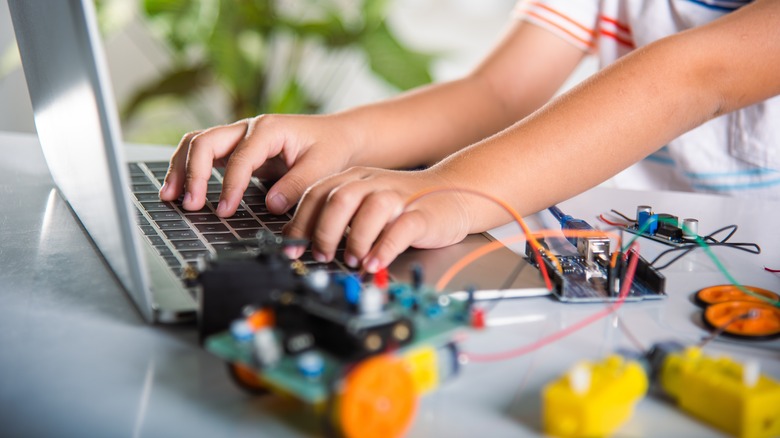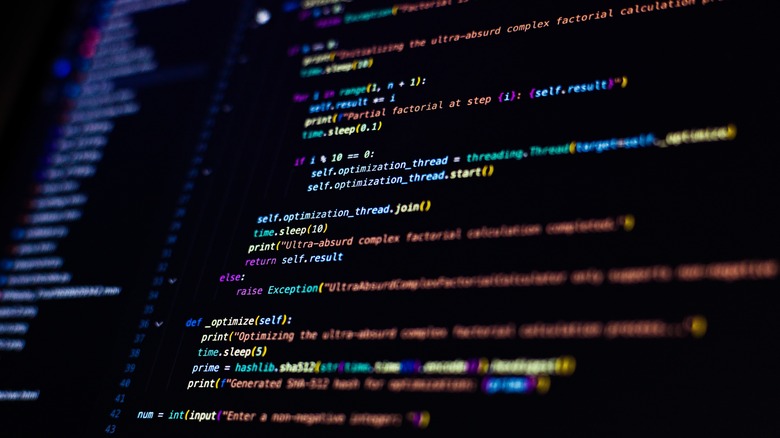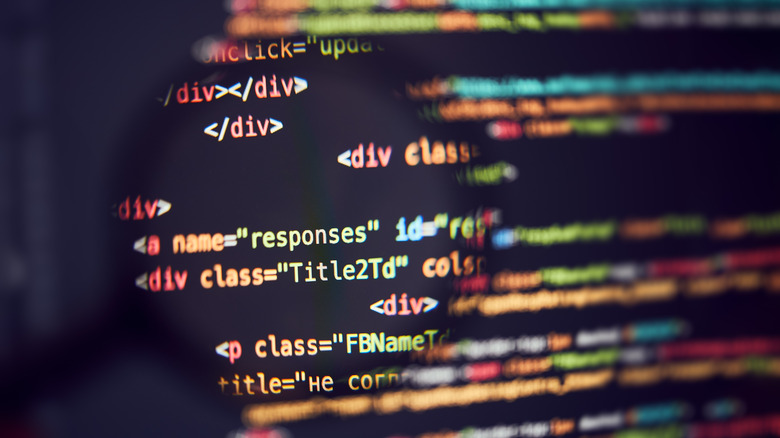
Sorapop Udomsri/Shutterstock
The Arduino platform offers a variety of affordable toys used by DIY enthusiasts for simple electronics projects. It is known for being easy to learn and is built on a variant of the C++ programming language. With an active community and detailed documentation online, the Arduino platform is ideal for beginners, including those who have never written code before.
One of the key differences between Arduino and Raspberry Pi is the programming language they operate on. While Raspberry Pi users can code in multiple languages, Arduino has one simplified language, so you don’t have to search around online to find answers to questions.
The Arduino Wire library is a core aspect of Arduino’s integrated development environment, or IDE, and is a must-have if you’re using sensors or extra microcontrollers in your project. Like Arduino’s other libraries found on the Arduino Library Reference page, the Wire library is designed to simplify writing code. Let’s look a closer look at Arduino’s Wire library, how it works, and when you might use it in your DIY projects.
What is the Arduino Wire library?

Orian Lev Ari/Shutterstock
The Arduino Wire library is a set of communication functions used to read and write data to and from other devices. The library is essential for DIY projects that involve controlling external components such as sensors, displays, and other microcontrollers. By using a protocol called Inter-Integrated Circuit (I2C), the Wire library greatly reduces the number of wires required to connect devices. The protocol is supported on all Arduino boards, including the latest Arduino Nano Every model.
The I2C protocol only requires two wires to connect external devices. One wire (called serial data or SDA) is responsible for transferring data, while the other wire (serial clock or SLC) is used to synchronize the data exchange via a pulsing signal. Combined, they allow two devices to send and receive a message using bits of data. Some Arduino boards feature the I2C pins in different places, and you can check out the full hardware requirements for all Arduino boards on the Wire Library Reference page.
Where can I find the Arduino Wire library?

Sergey Mironov/Shutterstock
There is no setup needed to use the Arduino Wire library, as it comes installed in the Arduino IDE. You can find the library files by navigating to Arduino/Libraries/Wire, but it’s not recommended to open the files, as modifying them will likely require you to reinstall the IDE. To use the Wire library, you must insert the command below at the top of your sketch:
#include
This gives you access to the Wire library, and you’re now able to use all the commands. There’s only a small number of major functions in the Wire library, which is handy if you’re getting started with Arduino. Below are some of the most common functions in the library:
- Wire.begin(): This function is used to activate the Wire library.
- Wire.write(): This function allows a device to send data as a data byte, string, or array.
- Wire.read(): This function is used by the receiving device to read the data that has been sent.
- Wire.onReceive(): When a device has received data from a master device, this function will be called.
Implementing Arduino’s Wire library into your projects is an easy process that shouldn’t take up too much time. With minimal commands to learn and a simple setup, you can start using the library in your Arduino sketches in no time.